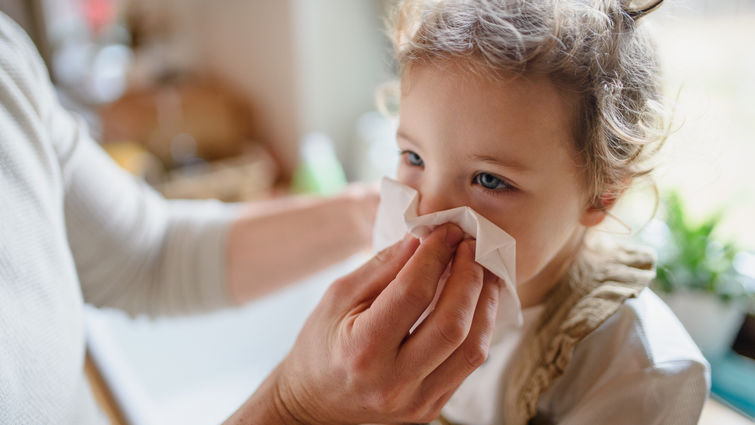
RSV, or respiratory syncytial virus, causes illness of the nose, throat, and lungs, and according to the CDC, it hospitalizes around 58,000 kids under the age of 5 annually. Children’s Hospital pediatric infectious disease specialist Maulin Soneji, MD, says for healthy kids with well-developed immune systems, RSV is generally like a cold. However, for those with under-developed immune systems or kids under 2, RSV can turn into bronchiolitis or pneumonia.
RSV spreads most often during the fall, winter, and spring seasons through fluid spread from a sick person’s mouth or nose. However, with COVID-19 safety measures such as mask-wearing and physical distancing throughout fall and winter 2020, Soneji says RSV cases in kids were significantly affected.
“Last year, we did not have a hectic RSV season, which generally runs from October until around March or April,” he says. “But after last winter when we saw a relaxing of safety measures due to lower COVID-19 cases, we saw a very irregular influx of late spring and summer RSV cases.”
Soneji expects another rise in RSV cases throughout the fall and holiday season.
“With more vaccinated people, fewer COVID-19 cases, and fewer safety precautions, more people will probably be traveling and gathering together, giving way to the normal spread of RSV,” he says.
RSV will often spread quickly in classrooms or daycares, and an older and healthier child may bring the virus back home to a younger child or infant. Soneji recommends that parents with young kids under the age of 2 or immunocompromised kids be on the lookout for RSV symptoms, which begin between two to five days after contracting the virus.
General symptoms include fever, congestion, cough, sneezing, runny nose, lack of appetite, and fussiness. If you see these symptoms, Soneji recommends monitoring your child, keeping them hydrated, and clearing their nose of mucus.
It’s time to contact your pediatrician or take your child to the hospital if your child is showing signs that they are struggling to breathe. These signs may include faster breathing, flaring of nostrils, wheezing, grunting during breathing, etc.; additionally, an infant will have issues with or not be feeding.
Soneji says the best way to protect yourself and your kids is to continue using tried and true safety and hygiene measures. For example, encourage your children to wash their hands often and avoid touching their faces. Disinfect frequently touched surfaces or objects in your home and vehicle. If possible, avoid close contact with sick people, and stay home when you are sick.
Visit our website to learn more about RSV and what you can do to protect your child this season.
